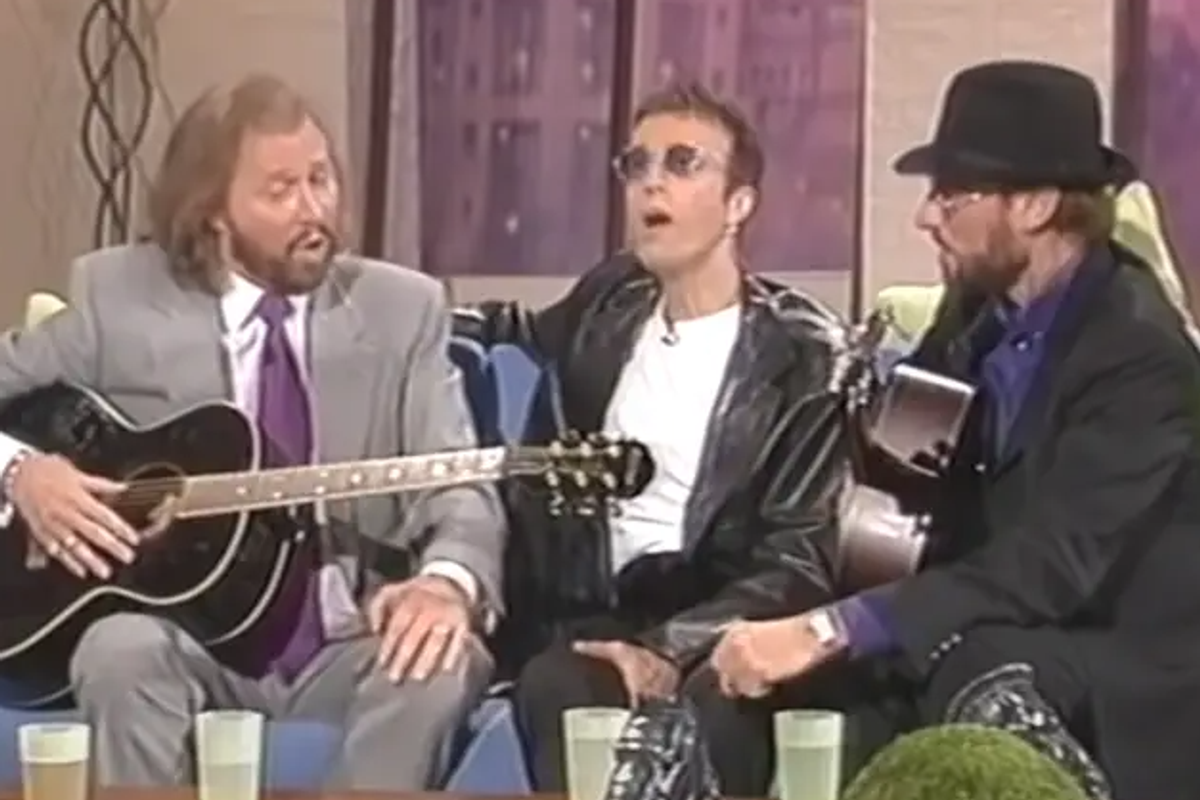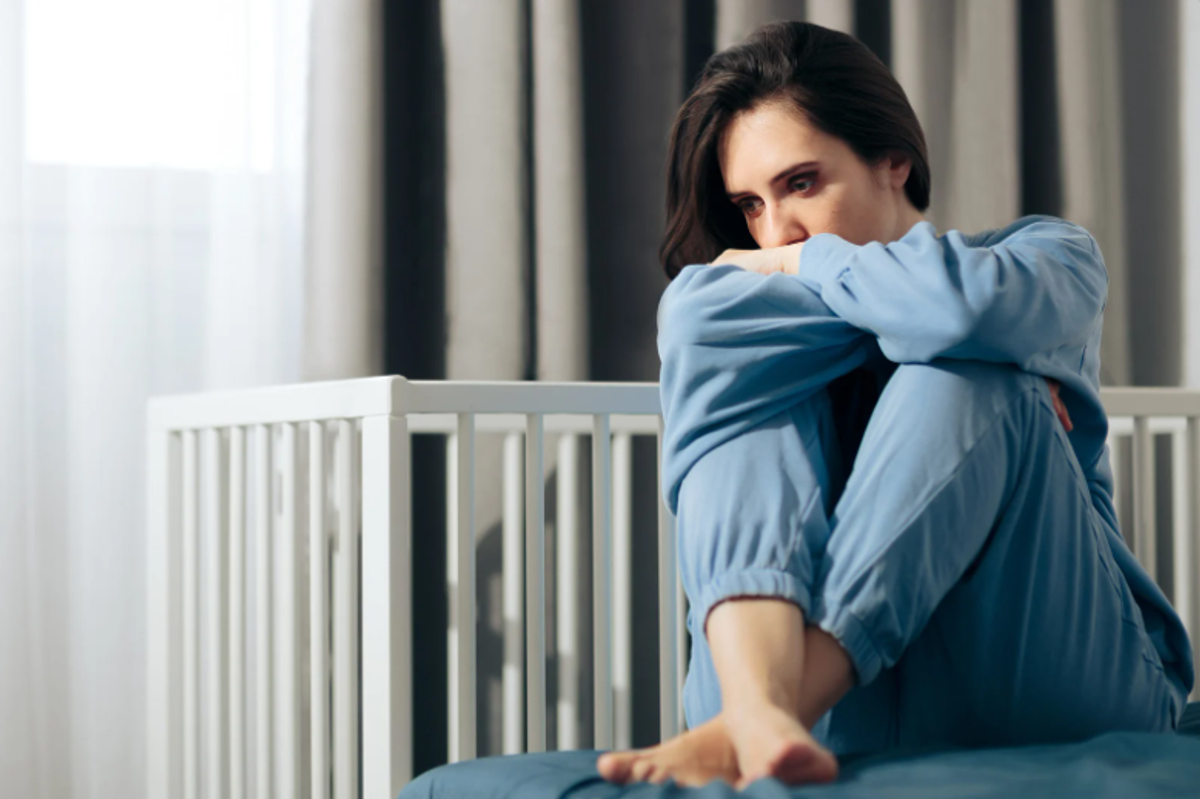Remember Party City? In the early 2000s, it was the place to buy Halloween costumes, birthday party decorations, or helium balloons. Sadly, Party City filed for bankruptcy in recent years and closed the last of its stores in early 2025. The move took a lot of people who still enjoyed shopping there by surprise.
If it feels like Party City isn't the only mainstay business Millennials grew up frequenting that's shut down lately—and that's because it's not. Other big nostalgic chains that have all-but closed up shop in recent years include Toys R Us, KB Toys, Red Lobster, Joanne's Fabrics, TGI Fridays, Hooters, Big Lots, Kmart, Sports Authority... the list goes on and on and on.
 A nearly empty Party City parking lot.By Mike Kalasnik/Wikimedia Commons
A nearly empty Party City parking lot.By Mike Kalasnik/Wikimedia Commons
A lot has changed in recent years, certainly. The pandemic permanently altered our in-person shopping habits and, of course, more and more of us are shopping online. Why go to a store when Amazon can bring anything to your doorstep in just two days? That shift has made it hard on a lot of businesses that were popular in the early 2000s.
But Americans, collectively, didn't just decide to stop going to stores and restaurants. In fact, younger generations surprisingly prefer in-store shopping to online.
So, why are Toys R Us and Party City gone? Why has Red Lobster's Endless Shrimp finally come to an end? It would be an oversimplification to say these business failed and that time passed them by, an explanation that's missing one crucial factor: Private equity.
Sometimes these business were in trouble before shutting down. Sometimes, they weren't, or maybe could have adapted to modern times if given the chance.
David Lu, a former corporate strategist with Capital One, now makes informative TikTok videos where he breaks down complex historical and geopolitical topics in a way that anyone can understand. He recently tackled this exact problem.
Lu explains that there's a lot of financial trickery involved but essentially the process (at its worst) goes something like this:
- Private equity firm wants to buy a business for a huge sale price
- That price is contingent on the business taking on massive loans and debt
- The private equity firm milks as much profit as possible from the business, by slashing costs and quality and driving up prices
- The business, saddled with unmanageable debt and a cratering reputation, eventually declares bankruptcy and closes its doors
- Private equity firm, owners, and CEOs make a fortune while stores close and workers lose their jobs
"A lot of problems in this country can be traced back to private equity," he claims, "including unaffordable housing, unaffordable healthcare, and mass layoffs."
@david_the_greatest_**Some FAQ based on the comments: I didn’t mention these points in the video to keep it simple and to the point, but if you’re curious, feel free to read: 1.) When Carlyle was buying ManorCare in 2007, why was ManorCare valued at $5-6B if its real estate assets were already worth $6B? - ManorCare’s assets (real estate) are only one part of the company’s equity value. You have to subtract liabilities as well, which included $1.9B of debt - The company’s equity value isn’t always the same as the company’s actual valuation. The actual valuation can vary based on somewhat subjective analyst estimates, but it’s typically calculated as a multiple of the company’s annual earnings, adjusted by how much investors believe the company will grow or shrink. This multiple is typically 15-20x, and is called a PE ratio. In ManorCare’s case, its 2006 pre-tax income was $266.6M, so if we assume a PE ratio of 20 (meaning the company is valued at 20x earnings), we get a valuation of $5.3B. 2.) During the process of Carlyle buying ManorCare, how did ManorCare borrow $5B from the bank, and just gift it to Carlyle? It’s essentially written in the contract of this deal, which is called a leveraged buyout. Carlyle won’t make the deal unless ManorCare accepts that it will borrow $5B from the bank and allow Carlyle to “count” that as Carlyle’s payment. ManorCare’s shareholders are ok with this, because they’ll still get their $6B and walk away happy, so they force ManorCare to do this. This is the basic concept that the parties are agreeing to, but the exact logistics of how this is legally executed are: - Carlyle sets up a shell company to buy ManorCare - The shell company signs loan agreements with the banks - When the deal closes, the debt gets “pushed down” from the shell company to ManorCare - Now ManorCare has the $5B (which got borrowed from the bank), plus Carlyle throws in an extra $1B, and uses this $6B to pay the shareholders 3.) Why would the bank lend a whopping $5B to ManorCare in the first place? Because ManorCare’s $6B of real estate was provided as collateral. The bank knew it could get its $5B by taking this collateral. 4.) How could Carlyle force ManorCare to sell its $6B of real estate if that real estate was used as collateral for the $5B bank loan? This gets somewhat complicated, but basically: - By the time of this $6B real estate sale, ManorCare’s $5B of debt wasn’t owed to the same creditors who lent them the money in the first place - It was sliced up and sold to a larger pool of creditors - For some of those creditors who were entitled to collateral, ManorCare agreed to 1.) pay off a portion of the debt right away 2.) give the creditors a a portion of ManorCare’s future operating cash flow as collateral - Some of the creditors were bondholders, and they aren’t entitled to collateral - And for the largest creditor, HCP, it owned $1.7B of ManorCare’s debt, but HCP itself would be the one who bought ManorCare’s $6B of real estate, so the $1.7B was deducted from the sale price 5.) During bankruptcy, how do the bankers, who are “first in line to get their money back”, actually get that money back? The creditors get their money back mostly because they can take the collateral (which got complicated, as mentioned above) and sell it. The bondholders mentioned above do lose their money, however. Basically - my point with this section is that in a bankruptcy, the creditors are always prioritized in getting their money back, but the workers are not. The workers are left with nothing. For example, in the Toys R Us bankruptcy, the creditors ended up being fine, but there were 30,000 workers who lost their job, and they weren’t paid any severance - even though the company policy explicitly said they were entitled to it. In some bankruptcies in the United States, unpaid wages are even ignored. #corporategreed #privateequity #costoflivingcrisis
To make his point, Lu references the infamous case of senior living facility brand ManorCare. An essay in the New York Times explains exactly how selling to a private equity firm rapidly destroyed the company, and worse, hurt the seniors who lived there:
"In 2007, Carlyle—a private equity firm... bought HCR ManorCare for a little over $6 billion, most of which was borrowed money that ManorCare, not Carlyle, would have to pay back. As the new owner, Carlyle sold nearly all of ManorCare’s real estate and quickly recovered its initial investment. This meant, however, that ManorCare was forced to pay nearly half a billion dollars a year in rent to occupy buildings it once owned. Carlyle also extracted over $80 million in transaction and advisory fees from the company it had just bought, draining ManorCare of money.
"ManorCare soon instituted various cost-cutting programs and laid off hundreds of workers. Health code violations spiked. People suffered. The daughter of one resident told The Washington Post that 'my mom would call us every day crying when she was in there' and that 'it was dirty — like a run-down motel. Roaches and ants all over the place.'"
A few years later, ManorCare filed for bankruptcy while the Carlyle firm made out like bandits.
 Media headlines from recent years sounding the alarm on PEScreenshot from Evan Porter
Media headlines from recent years sounding the alarm on PEScreenshot from Evan Porter
Party City is a perfect example of this same ruthless profit-seeking strategy in action.
CNN reported the company had a staggering $1.7 billion in debt as of 2023 before filing for bankruptcy. If that seems like a ridiculous amount of debt for a store that sells paper plates and balloons, that's because it is. The founder of Party City later blamed private equity for the brand's collapse.
Red Lobster has the same story. The investors tried to blame it on the high costs of Endless Shrimp, but the restaurant was never going to survive paying exorbitant rents to its private equity firm for buildings it used to own.
Toys R Us? Yep, you know the tale.
- YouTube www.youtube.com
To be fair, private equity doesn't ruin everything. In fact, some of America's favorite institutions have been revived by the process when it works as intended.
Dunkin' Donuts was on the brink in 2005 before private equity investments helped its resurgence. The firm then exited and Dunkin' became public again. (Of course, now Dunkin' is owned by private equity once again.)
Blackstone, one of the biggest private equity firms in the world, revived a near-dead Hilton hotel chain into one of the top hospitality brands.
Even Party City was doing just fine with private equity investments for about a decade.
The idea is that struggling but well-established brands can take an infusion of cash to reinvest in the business, along with having a lot of seasoned strategists come on board to right the ship. The private equity firm will make money in the process, of course, but ideally they will exit and leave behind a thriving business—not a debt-ridden husk.
Ultimately, the world will probably be OK without Red Lobster and KB Toys. But people need—and want—places to go, places that have been around for years that we've come to know and trust.
According to RetailBrew, "29% shoppers said they were 'morally opposed' to shopping at Amazon, but 85% ended up purchasing something there anyway," in part due to a lack of other options.
Millennials and Gen Xers yearn for the days of walking around and touching things with our hands before buying them, talking to knowledgeable sales staff who could answer our questions, or having a sit down meal at a chain restaurant that didn't cost a fortune (if it included unlimited shrimp, all the better). The Economist reports that malls are making a comeback—only, mainstays like Claire's and Brookstone are dead (in large part because of... you guessed it).
It's fun to imagine a world in which Radio Shack could have evolved to thrive in the world of smart phones, or where we could still get a cheap pair of shoes at Payless instead of being limited to what the local Target has in stock.
That kind of thing is unlikely to happen while the private equity problem goes unchecked.
Bipartisan lawmakers have been eyeing tighter regulations on private equity firms for a while now, although progress is slow.
Long-established brands bringing in outside help and cash to adapt to the modern age could be a good thing, but there needs to be mechanisms in place that keep all of our favorite businesses from being bled dry.
But there's good news for the nostalgic among us: Toys R Us, for its part, is attempting a comeback this year. So is Payless. Here's a chance for Millennials to show that those nostalgic favorites never should have gone away in the first place.



 Stayin Alive GIF by Bee Gees
Stayin Alive GIF by Bee Gees 


 A nearly empty Party City parking lot.By Mike Kalasnik/
A nearly empty Party City parking lot.By Mike Kalasnik/ Media headlines from recent years sounding the alarm on PEScreenshot from Evan Porter
Media headlines from recent years sounding the alarm on PEScreenshot from Evan Porter